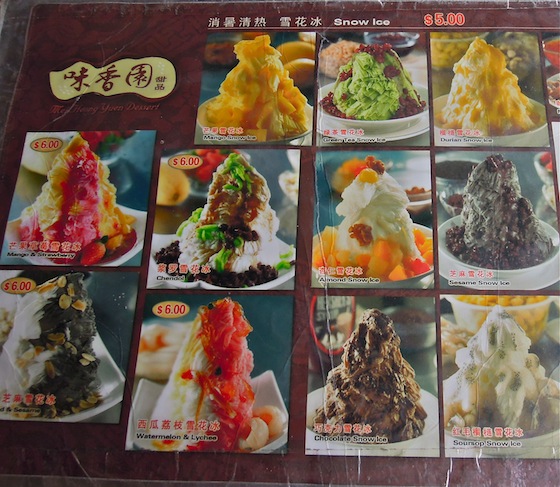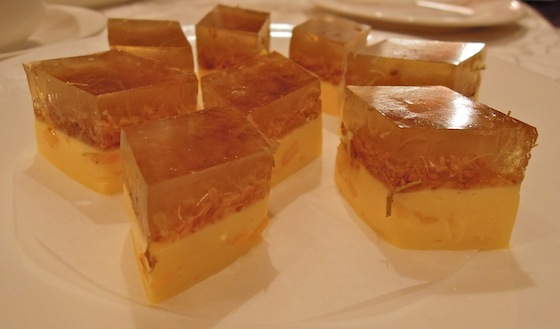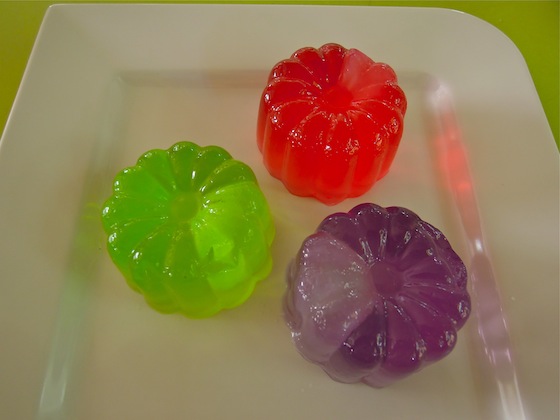Straddling the equator, with temperatures often in the 90s and the air thick with tropical humidity, icy treats offer natural refreshment in Singapore’s year-round heat wave. Although many have roots in neighboring cultures, the fantastical shapes and colors of these cooling combinations make them Singaporean classics.
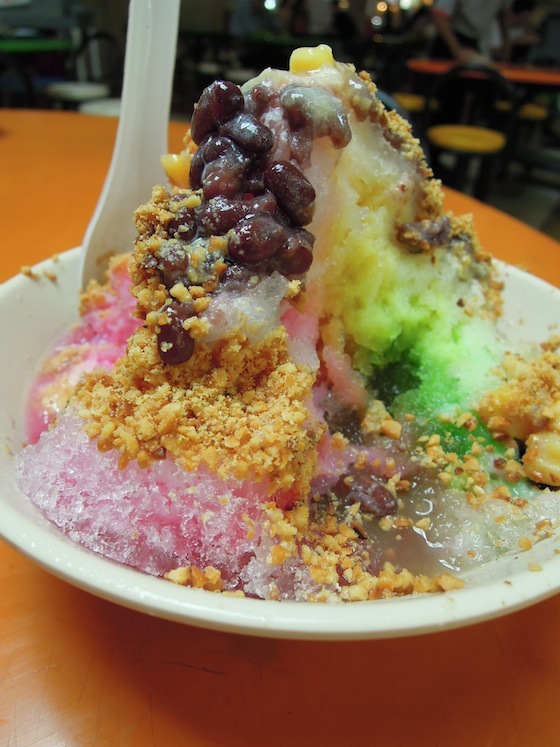
Ice Kachang provides a refreshing pyramid of pleasure
Ice Kachang -- the quintessential Singaporean dessert takes a mountain of shaved ice, douses it with a rainbow of syrups and sprinkles on toppings such as soft red beans and creamed corn. I order mine with a dusting of chopped peanuts for an extra dimension of crunch.
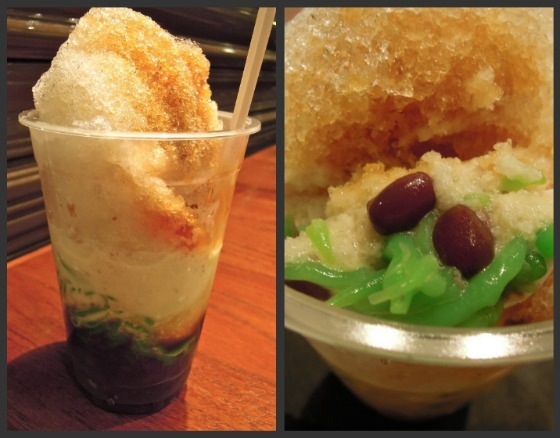
creamy, chewy, icy Chendol
Chendol -- the key ingredient in this icy treat is the jelly-like green noodles flavored with pandan leaf, layered with cooked red beans, chewy palm seeds, coconut milk and a sweet brown syrup.
Every Singapore resident I ask offers encouragement and advice on my sweet-seeking journey. They also caution me not to eat too many treats with creamy, coconut milk. (“Not good for the tummy.”) Luckily, there is a profusion of more delicate sweet dishes to choose from.
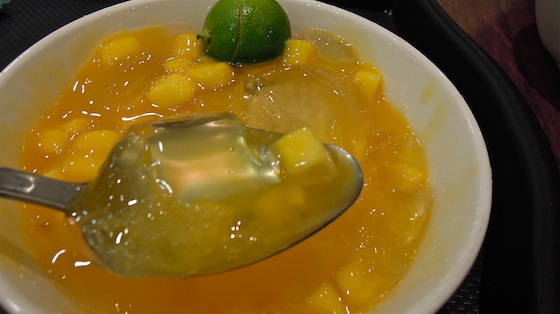
Slippery sweet Ice Jelly
Ice Jelly -- utterly light and refreshing: shaved ice with cold translucent jelly globules. I have mine topped with mango.
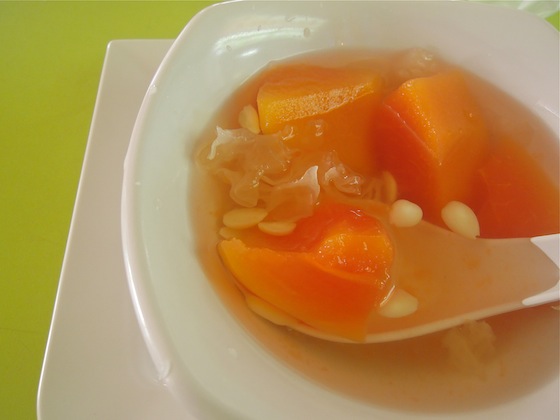
Double steamed papaya in syrup
Steamed Papaya with Snow Fungus and Almond -- served in light syrup. The snow fungus adds the texture of a dainty, frilly sponge. I enjoy it cold, but it also comes hot, as do several other desserts with a hot/cold option.
When the sky turns black and hurls lighting bolts, thunderclaps and pounding rain, it’s an invitation to duck into a cheerful neon-bordered café for a warm bowl of comfort, such as sweet black glutinous rice cooked into a velvety pudding, drizzled with a swirl of coconut milk.
Other warming choices:
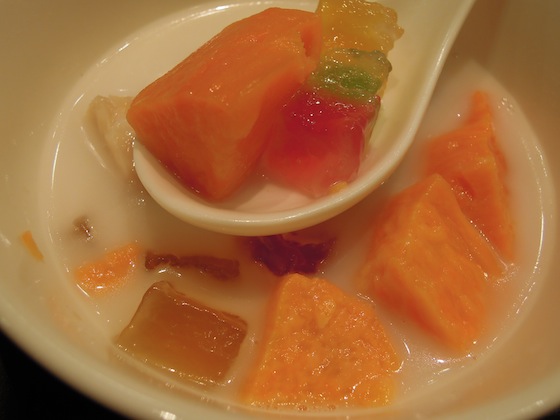
comforting and chewy Bubor Cha Cha
Bubor Cha Cha -- chunks of cooked yam and sweet potato with colored bits of chewy coconut jelly swimming in warm coconut milk.
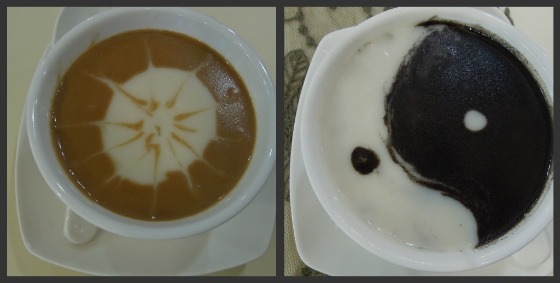
Peanut soup or Black sesame soup – topped with almond cream.
Chinese culture often cites the health benefits of certain foods to balance one’s yin/yang, for specific ailments or populations (e.g. pregnant women). A sign in Food Republic’s Ice Shop proclaims Red Beans with Lotus seeds “great for getting rid of dark circles under the eyes,” so there is no way I can pass that up.
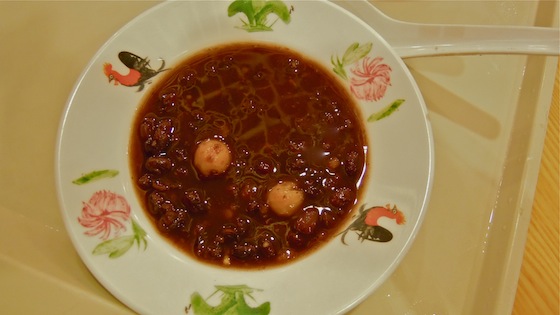
The places where I sample these treats vary as much as the flavors and forms they take. From fancy food courts in high-rise shopping meccas, like Wisma Atria’s Food Republic to beloved, old-fashioned, open-air Hawker Centres (Maxwell Road in Chinatown, Tekka Center in Little India and Lau Pa Sat in the financial district).
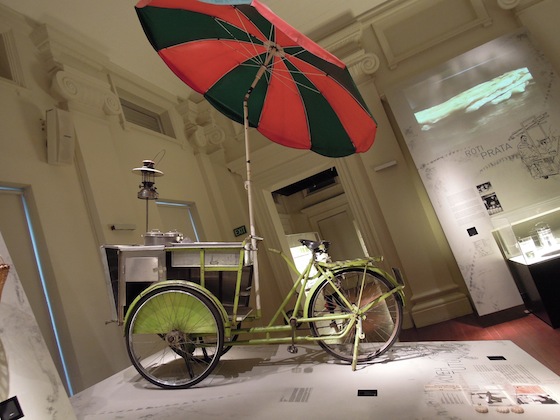
A visit to the National Museum of Singapore’s vibrant Living Gallery of Food provides the back-story to the city’s obsession with street food. Itinerant street vendors have always played an important role in this multi-cultural city. Since the 19th century, they traveled door-to-door preparing and peddling their wares or setting up carts and stands on the riverside. In the 1980s, as part of a project to clean up the river, Prime Minister Lee mandated that hawkers leave the riverside and take their places in designated hawker centers.
Scores of hawker centers, which are wildly popular with locals, are scattered around the city, each features vendors from various cultures, side by side, selling freshly made dishes at rock-bottom prices. You can have some Indian roti with your Malaysian beef rendang and finish off with sweet Chinese ah bolin (glutinous rice balls filled with yam, bean or sesame seed paste).
After spending an hour immersed in the museum’s videos, oral histories and food artifacts, I gain an appreciation for the context of Singapore’s food focus. As one hawker interviewed in a museum video explains, “Food makes us all equal, rich and poor, people of all races.”
Even though, I've tasted a dozen of Singapore’s sweet treats, there are many more to sample on my next visit…
